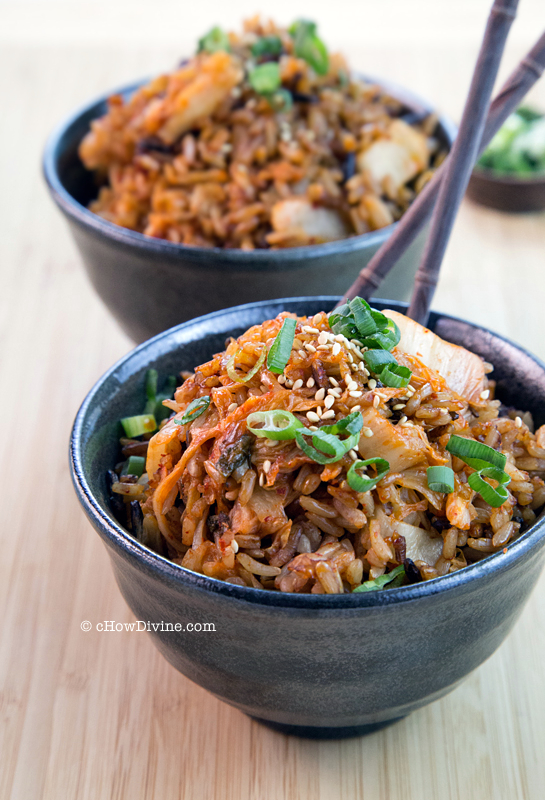This truly is a two-ingredient kimchi fried rice. Well, oil and salt don’t count. They aren’t really ingredients, are they? And the “fancy” stuff sprinkled on top on the photos? Believe me, you don’t need it. They were added just for the benefit of the photos. This simple kimchi fried rice tastes just as good on a paper plate and wooden chopsticks as it does in a fancy bowl and fancy toppings. 😛
Of course, there are many ways to make kimchi fried rice. This two-ingredient kimchi fried rice is just the simplest way to make it. It’s perfect when you want a quick (as in 10 minutes or under) meal or a snack. If you want something savory for breakfast, just add a fried egg with runny yolk. It’s just as tasty for lunch or dinner. And it really hits the spot when you’re craving a midnight snack. I don’t know what it is about kimchi fried rice; but it’s what I crave whenever my appetite is in full gear after a long night out (or in).
It can’t get simpler than this. This recipe requires nothing more than what the name literally translates to: kimchi and rice. There aren’t many dishes you can say that about. Just make sure that the kimch is nicely ripened or sour. And I usually make this with brown or wild rice, but any type of steamed rice will do, just as long as it’s day-old or cold.
Maat-it-gae-deu-sae-yo! That’s Korean (romanized, of course) for bon appetit!






